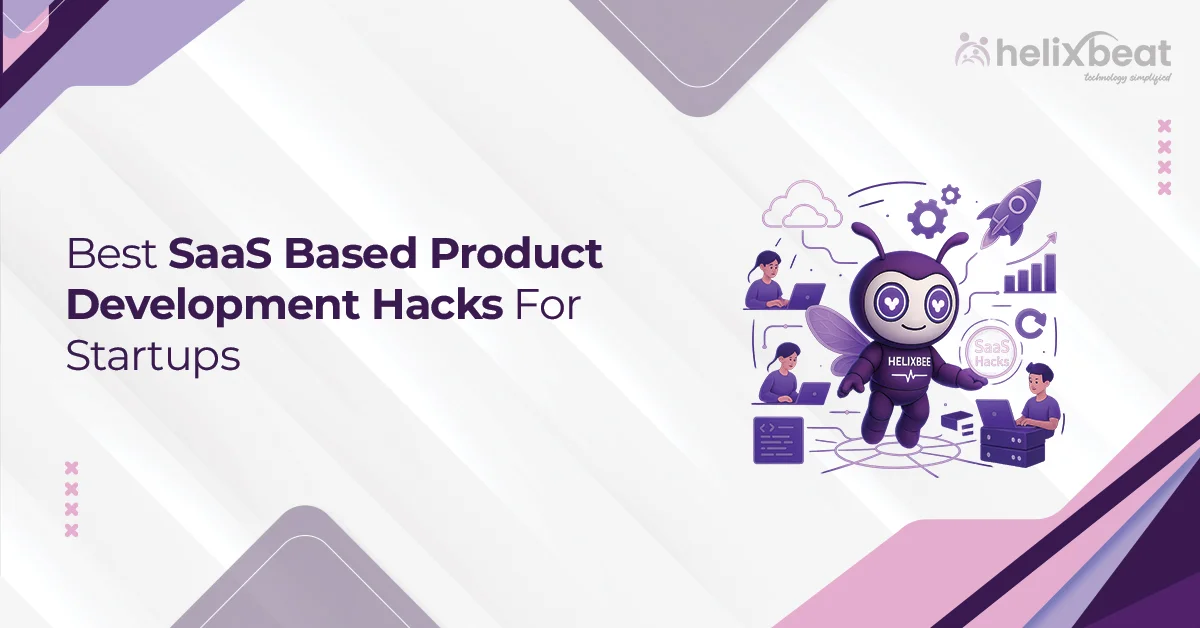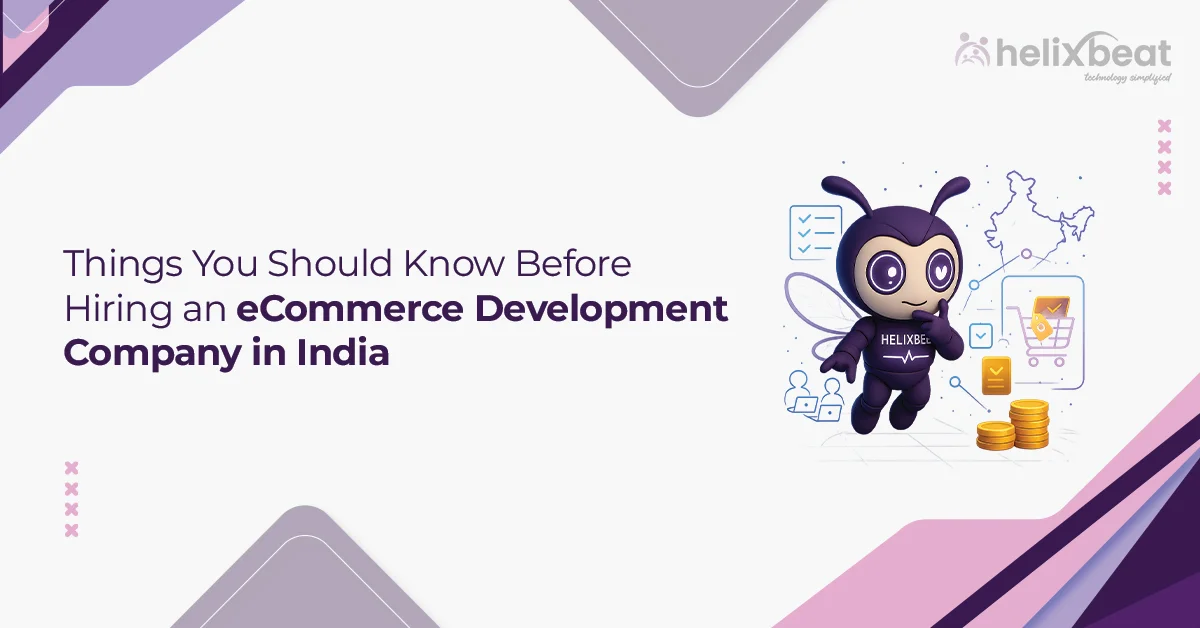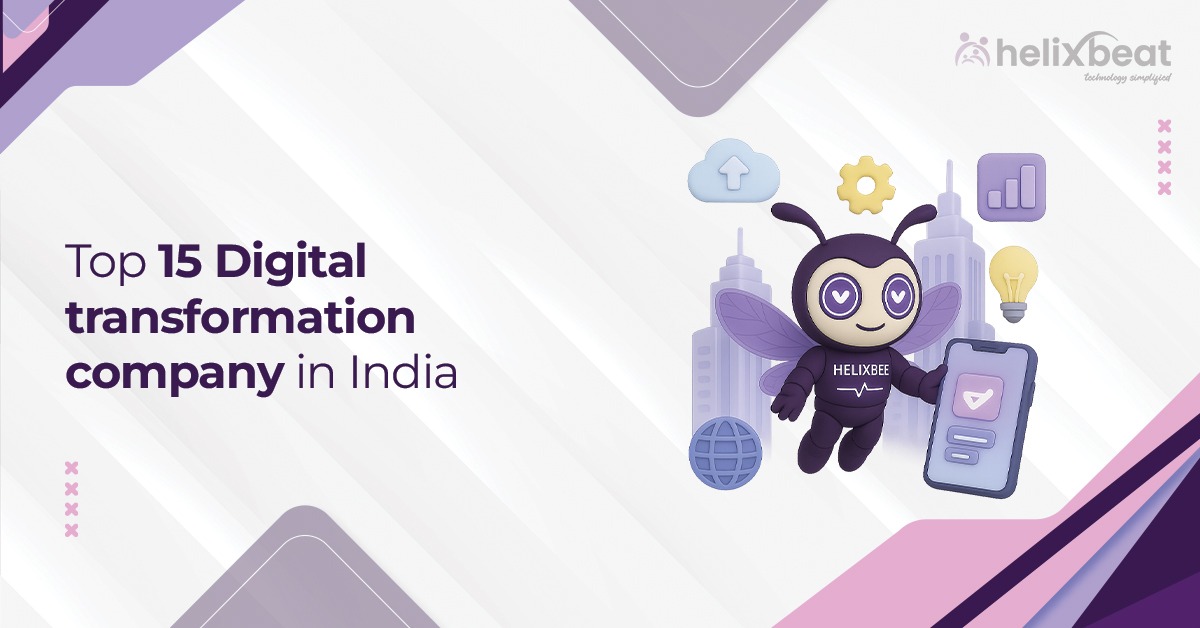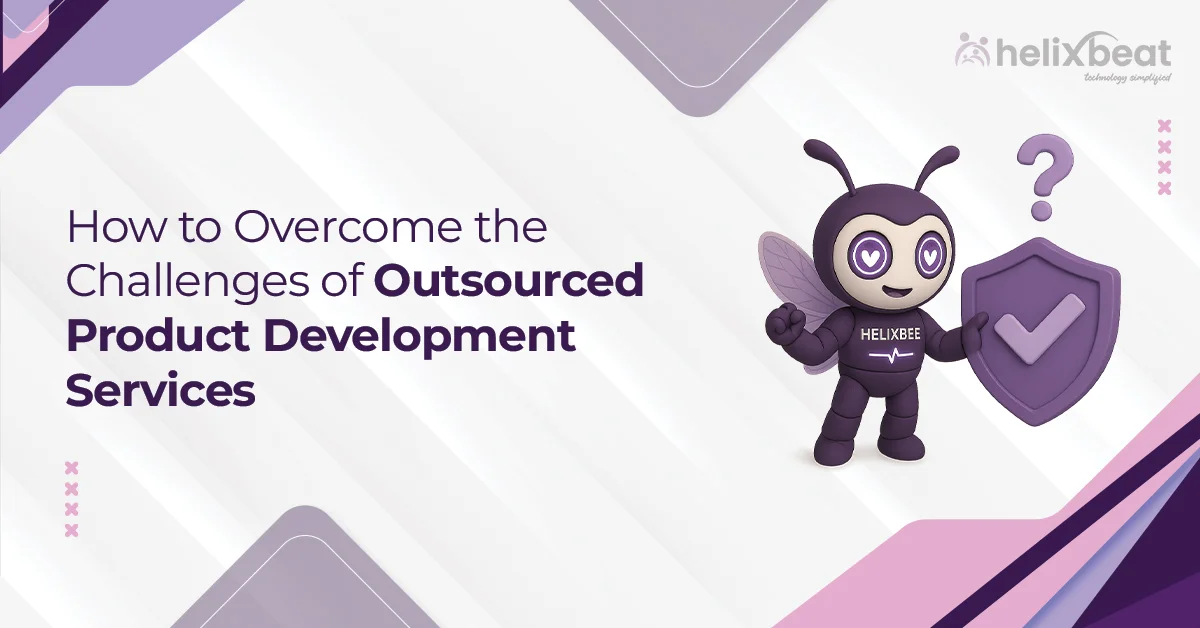Imagine you have a great business idea but only a small budget to make it happen. You’re excited about the possibilities, but there’s uncertainty—will people like it? Will it solve their problems? For many new businesses, these questions are a big part of the early stages.
This is where a Minimum Viable Product (MVP) can help. An MVP is a simple version of your idea that focuses on the most important features. It allows you to test your idea without spending too much time or money.
With an MVP for startups, you can learn what works, make improvements, and focus on what customers really need. In this blog, we’ll look at how MVPs can help startups, the steps to create one, and how Helixbeat’s product development solutions can help bring your idea to life.
Table of Contents
What Is an MVP?
An MVP, or Minimum Viable Product, is the simplest version of a product that delivers its core features to users. It is designed to test an idea with minimal resources while gathering useful feedback from early users. MVP for startups focuses on building only what is necessary to validate a concept before investing in a full-scale product.
A Practical Example
Consider a startup planning to create a fitness app with advanced AI features. Instead of building the entire platform upfront, they release a basic version that tracks workouts. Users can provide feedback on what they like or dislike. Based on this input, the team can refine the app and decide which advanced features to develop. This is one of the most effective MVP creation strategies, as it minimizes wasted resources and focuses on real user needs.
The Role of MVP in Startups
For startups, an MVP helps reduce the risk of failure by prioritizing what matters most—solving a specific problem for users. By adopting MVP creation strategies, startups can develop a functional prototype quickly and gather actionable feedback. This lean approach allows for faster improvements and smarter use of resources.
Ultimately, an MVP for startups is not just about saving time or money but about building a product that truly addresses user needs, making it a crucial step in the journey toward creating a successful business.
Why Should Startups Start with an MVP?
Starting with an MVP for startups is a practical way to test ideas and minimize risks. Instead of building a complete product, an MVP focuses on delivering the core features needed to solve a specific problem, allowing startups to validate their concept without overspending.
Validating Market Demand
Developing a full-scale product without understanding whether there is real market demand can lead to wasted time and resources. An MVP allows startups to test their ideas in real-world conditions and gather feedback from early users. This helps them understand if their solution resonates with the target audience before committing to full-scale development.
For example, a tech startup planning to create an e-commerce platform might start by building a simple website that lists a few key products. By observing how users interact with the platform and collecting feedback, the startup can decide whether to expand its offerings or make adjustments to its approach. MVP creation strategies like this reduce risks and allow startups to focus on what customers truly need.
Minimizing Development Costs
Building a fully featured product can be expensive, especially for startups with limited resources. An MVP concentrates only on the essential features, saving money and preventing unnecessary expenses. By avoiding overbuilding, startups can use their funds more wisely and invest in features that are proven to add value.
For instance, a fintech startup could launch a basic payment gateway as its MVP. This would allow the team to gauge user interest and gather feedback without the high costs of developing a complete financial platform. With MVP creation strategies, startups can identify priorities, allocate resources effectively, and build products that meet market needs.
Building on this, Helixbeat’s expertise in MVP development helps startups bring their ideas to life with speed and precision. By prioritizing testing and refinement, Helixbeat ensures startups stay efficient and cost-effective while creating solutions that resonate with their target audience.
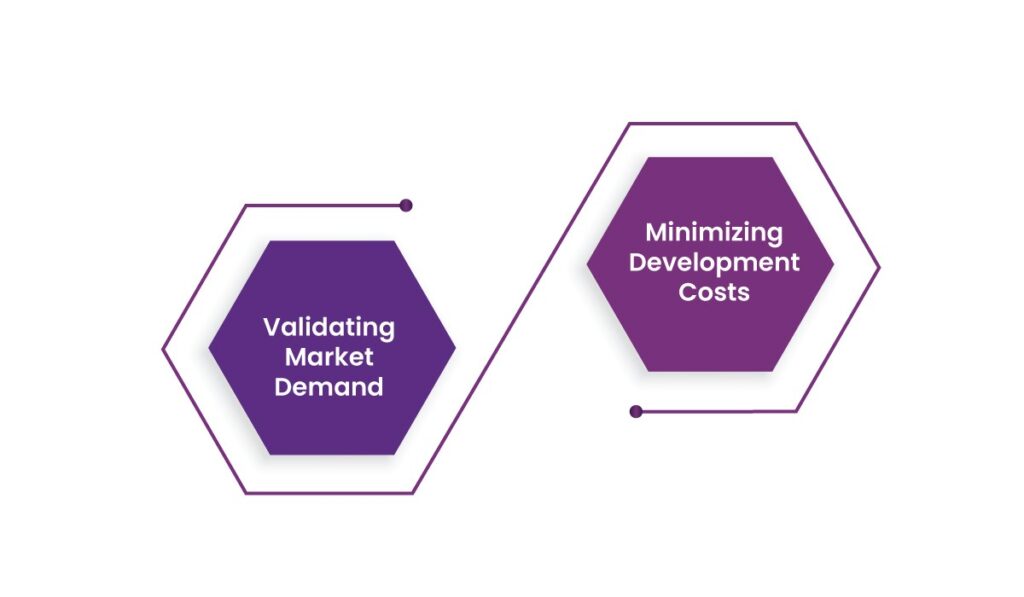
How Can Startups Save Money with MVPs?
For startups with limited budgets, creating a full-scale product can be risky and costly. Adopting an MVP for startups helps focus on the most important features, saving money while delivering a product that meets user needs. By following smart MVP creation strategies, startups can avoid unnecessary expenses and build products more efficiently.
Avoiding Unnecessary Features
One of the biggest benefits of an MVP is that it avoids spending time and money on features that users don’t need or want. Instead, an MVP focuses on delivering the core functionality to solve a specific problem for users. This approach helps startups avoid wasting resources on unnecessary elements.
Example: A retail startup initially planned to include an AI-powered recommendation engine in its e-commerce platform. However, after launching an MVP with basic shopping features, they found that customers preferred a manually curated experience. This feedback helped the startup focus its efforts on enhancing the user interface and product selection, rather than investing in expensive AI features.
Shorter Development Cycles
An MVP significantly reduces the time required to develop and launch a product. By focusing only on essential features, startups can bring their products to market faster. Early launches allow startups to gather user feedback and make improvements quickly.
Example: A food delivery startup launched a basic MVP with just an order placement feature. By gathering user feedback, they were able to improve their platform iteratively, eventually adding features like tracking and in-app payments. With Helixbeat’s agile approach, startups can reduce development timelines by up to 40%, helping them save both time and money.
Fewer Errors and Bugs
Since an MVP is a simpler version of the product, it’s easier to test and identify potential issues early in the development process. Addressing these issues during the MVP stage reduces the risk of costly errors after the product is fully developed.
Example: A SaaS company used an MVP to test its project management tool. During the MVP stage, they discovered usability issues with the dashboard, which they resolved before scaling up. This saved them significant costs that would have been incurred from post-launch fixes.
Lower Risk of Financial Loss
Focusing on the most critical features helps startups minimize the financial risks of developing a full-scale product. Launching a Minimum Viable Product (MVP) allows businesses to test their ideas with a smaller investment, gather real-world feedback, and make informed adjustments before committing to larger-scale development.
Example: A fitness app startup significantly reduced financial risk by launching an MVP that included only a workout tracking feature. Early user feedback revealed which features were most desired, enabling the team to refine their app and add valuable functionalities. This approach prevented unnecessary spending on features that users wouldn’t have found useful, saving time and resources while aligning the product with market needs.
Efficient Use of Feedback
Gathering feedback is one of the key benefits of an MVP. Early users provide valuable insights that help startups make informed decisions about what to improve or add. This approach ensures that resources are used effectively, based on what users actually want.
Example: An educational platform launched an MVP with basic video lessons. User feedback revealed that live Q&A sessions were highly requested, leading the startup to prioritize this feature in future updates. This iterative process helped the platform grow while staying focused on user needs.
By adopting an MVP for startups and using smart MVP creation strategies, startups can save money, reduce risks, and create products that truly resonate with their audience. With Helixbeat’s expertise in agile development, startups can optimize their MVP processes and bring their ideas to life efficiently.
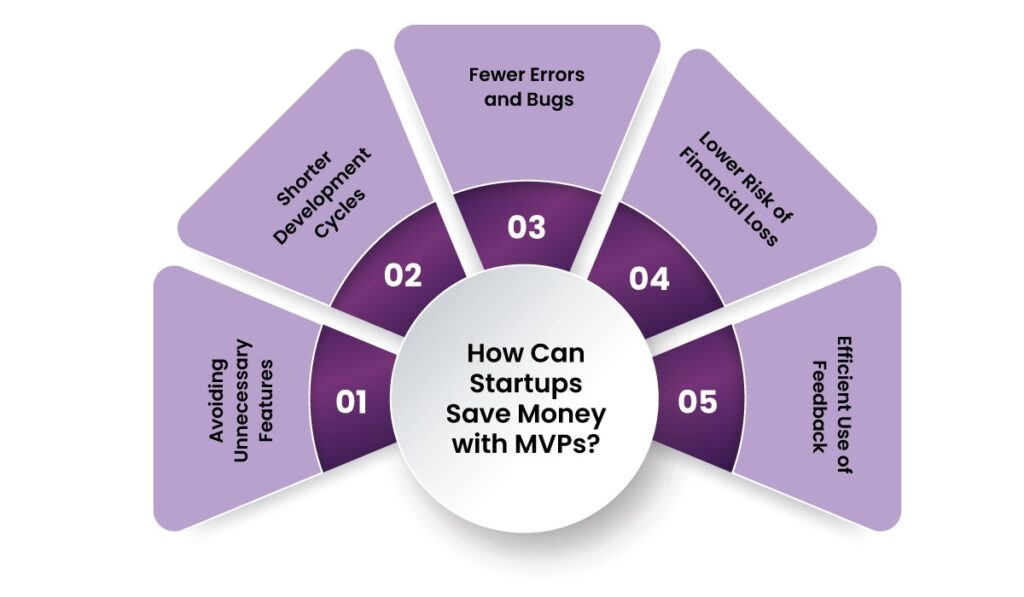
To summarize
Building an MVP for startups is a strategic way to test ideas, save resources, and fine-tune your product before scaling up. By applying effective MVP creation strategies, such as prioritizing user-centric design, adopting agile methods, and planning for scalability, startups can validate their ideas without overstretching their resources.
And speaking of strategy, Helixbeat’s Custom Product Development Solution offers everything you need to create a powerful MVP. With their agile methodologies, experienced team, and client-focused approach, Helixbeat ensures your MVP is not just functional but ready to meet market demands and drive growth.
Take the first step toward building a winning MVP. Discover the Custom Product Development Solution by Helixbeat today and bring your startup vision to life!
FAQs
Why is MVP important for startups?
MVPs help startups validate their ideas, reduce costs, and gather user feedback before committing to full-scale development.
How does an MVP save money?
By focusing only on core features, MVPs prevent unnecessary spending on features that may not be needed.
What are the key features of an MVP?
The key features include core functionality, scalability, and user-centric design.
How can startups identify essential MVP features?
Startups can identify features through market research, target audience engagement, and competitor analysis.
What is the difference between an MVP and a prototype?
A prototype is a preliminary model, while an MVP is a functional product designed for real-world testing.
How does Helixbeat help with MVP creation?
Helixbeat offers agile, user-focused MVP solutions tailored to your business needs, ensuring faster time-to-market and cost efficiency.
What industries can benefit from MVPs?
Industries like e-commerce, fintech, healthcare, and logistics can benefit significantly from MVPs.
Can MVPs be scaled into full products?
Yes, MVPs are designed to be scalable, allowing startups to add features based on user feedback.





